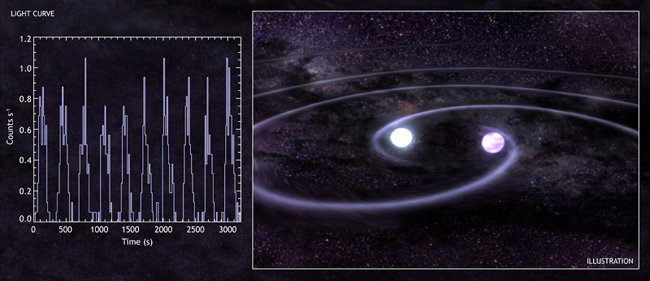RX J0806.3+1527: RX J0806.3+1527 (or J0806): A pair of white dwarf stars in a very tight orbit.
Caption: Chandra data (above, graph) on J0806 show that its X-rays vary with a period of 321.5 seconds, or slightly more than five minutes. This implies that the X-ray source is a binary star system where two white dwarf stars are orbiting each other (above, illustration) only 50,000 miles apart, making it one of the smallest known binary orbits in the Galaxy. According to Einstein's General Theory of Relativity, such a system should produce gravitational waves - ripples in space-time - that carry energy away from the system and cause the stars to move closer together. X-ray and optical observations indicate that the orbital period of this system is decreasing by 1.2 milliseconds every year, which means that the stars are moving closer at a rate of 2 feet per year.
Chandra X-ray Observatory ACIS Light Curve
|


